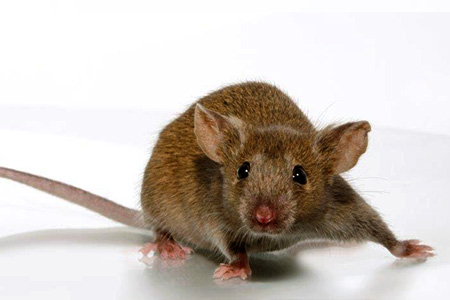 If you are reading this you already know that the use of sentinel animals in research and production colonies is critical to facilitate health monitoring and maintain animal quality. A sentinel animal must have a strong but not excessive immune response to infectious agents, with the ability to seroconvert to viral agents.
If you are reading this you already know that the use of sentinel animals in research and production colonies is critical to facilitate health monitoring and maintain animal quality. A sentinel animal must have a strong but not excessive immune response to infectious agents, with the ability to seroconvert to viral agents. You are also probably aware that commonly used models include: the hearty outbred Swiss Webster or inbred C3H (C3H/HeNTac) as mouse sentinels and the Sprague Dawley® (NTac:SD) as a preferred rat sentinel.
Why the C3H Mouse Sentinel?
- The availability of gnotobiotic mice for introduction into barrier colonies; this gives us absolute assurance that the sentinels start without any of the agents we test for.
- A different coat color from the majority of commercial lines to minimize risk of genetic contamination.
- Published reports that C3H effectively seroconvert to agents such as MPV.
Swiss Webster as a Sentinel
- Outbred lines generally show good reactivity to various pathogens with robust seroconversion.
- Hardy and relatively inexpensive.
- The albino coat color is easily differentiated in colonies with a B6 background.
Sprague Dawley® as a Rat Sentinel of Choice
Outbred rat stocks such as the Sprague Dawley® generally show good reactivity to various pathogens with apposite seroconversion. This rat line, like the Swiss Webster mouse, is hardy and relatively inexpensive.In locations where immunocompromised animals are housed, immunocompromised animals may be used for diagnostic tests such as microbiology, molecular biology and parasitology, but sentinels must be used for serology.
The Nude Mouse and Rat
Nude mice and rats are common immunodeficient models used for a wide range of studies, including many xenograft applications. The nude mutation in the Foxn1 gene in both mice and rats causes thymic agenesis, hairlessness and lack of T cells when homozygous.The Fox1nu (mouse) and Foxn1rnu (rat) mutations arose spontaneously and have proven to be of immense value, particularly in oncology research where the immunodeficient phenotype of the nude permits engraftment of human tumors.
Resist The Temptation...
Researchers who use nude mice or rats may be tempted to use heterozygous nudes as sentinels. Resist! Female nudes are poor breeders; because of this nudes are usually produced by mating heterozygous females with homozygous males. The resulting litter includes both heterozygous and homozygous offspring. As only the homozygous pups are athymic and lack T cells and hair, this produces an equal quantity of offspring that are not useable for xenograft studies.Heterozygous Nudes Make Poor Sentinels
Heterozygous nude mice and rats may be useful for pharmacokinetic and dosing studies. Although it is tempting to use extra heterozygous animals as sentinels, it is not recommended. The immune abnormalities of heterozygous nude mice and rats render them a poor sentinel candidate. While heterozygous nude mice and rats are not overtly immunocompromised, they do not have completely normal immune systems. Reports in the literature initially indicated that heterozygous nude animals were phenotypically normal, but subsequent research demonstrated various differences compared to wild type animals. These differences include:- Thymic Abnormalities - Heterozygous nude mice have hair and develop a thymus, but the thymus of heterozygous nude mice is smaller than in wild type animals and has lower cellularity.1-5 Heterozygous nudes display reduced numbers of cortical and medullar lymphocytes compared to wild types.2 Similar effects have been seen in heterozygous nude rats.6
- Reduced Stem Cell Potential - Heterozygotes also display lower stem cell potential and lymphocytopenia compared to wild types of the same strain background. 6
- Altered Antibody Response - Heterozygote nudes appear to have delayed class switching. The kinetics of B cell responses differ between heterozygous nudes and wild types. Heterozygous nudes also have more variable response in antibody formation when compared to homozygous nudes and wild types for different antigens.6
Sentinels & Health Standards
The availability of sentinel strains at a very well controlled health standard is critical. Not only must the chosen sentinel strain have an appropriate reaction to infectious agents, it should be of equal or better health status to the room that is being monitored. Introduction of sentinels at a lower health status can introduce undesired agents and confound health monitoring.If you have a question about sentinel selection please ask us.
















.jpg)

.jpg)
.jpg)
.jpg)
.jpg)





.jpg)


.jpg)
.jpg)




.jpg)




.jpg)

.jpg)





